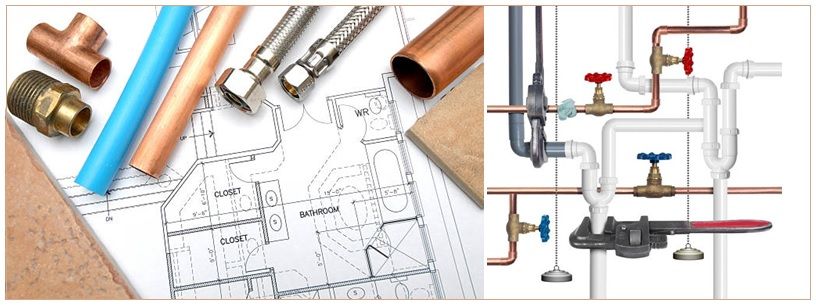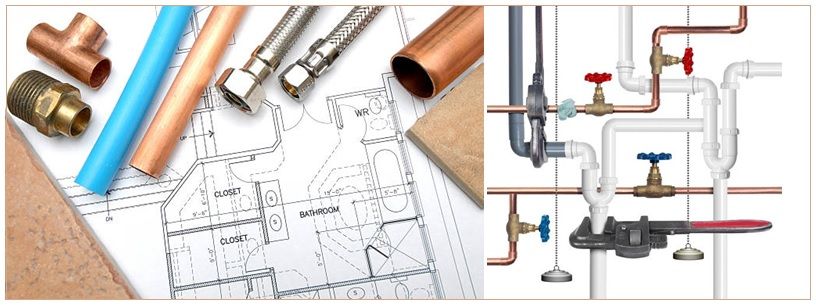House piping systems are the networks of pipes and fittings that deliver water to and from various parts of a home. They support essential activities such as drinking, cooking, bathing, laundry, and waste removal. These systems include freshwater supply lines, drain-waste-vent (DWV) pipes, gas pipes, and sometimes rainwater or greywater systems.
Piping has been an integral part of modern homes for decades, evolving with technology and building practices. Whether in new construction or renovations, installing the right type of piping is crucial for long-term performance, efficiency, and safety.

Why Piping Systems Matter Today
Efficient piping systems are more important than ever due to increasing urbanization, aging infrastructure, water conservation goals, and energy-efficiency regulations. Poor plumbing design or outdated materials can lead to:
-
Water leaks and structural damage
-
High utility bills
-
Health issues from contaminated water
-
Frequent maintenance costs
-
Non-compliance with building codes
Piping affects everyone from homeowners and tenants to plumbers and developers. The materials and installation methods you choose directly influence comfort, cost, and safety.
Recent Trends and Updates (2024–2025)
In the past year, piping systems have seen notable shifts driven by environmental concerns, digital technology, and regulations:
-
Eco-friendly materials rising: There is a shift toward recyclable and low-toxicity materials like PEX and HDPE, especially in green buildings.
-
Smart water systems: Leak detection sensors, water pressure monitors, and mobile-connected shut-off valves are being installed more widely.
-
Lead pipe replacements: Countries like the U.S., Canada, and parts of Europe are accelerating programs to replace aging lead service lines (U.S. EPA lead pipe rule update, 2024).
-
Push-fit fittings popularity: DIY installations are becoming easier with push-fit or “tool-free” fittings that simplify plumbing tasks.
-
PEX vs. Copper debates: Professionals are increasingly choosing cross-linked polyethylene (PEX) over traditional copper due to lower cost and ease of use, though copper remains standard in certain regions.
Legal and Regulatory Overview
House piping systems are governed by local plumbing codes, national construction standards, and health regulations. Here’s how these affect installation and maintenance:
Common Regulations Across Countries:
| Country | Key Regulation | Focus Area |
|---|---|---|
| United States | IPC, UPC, local codes | Material safety, backflow prevention, pressure |
| Canada | National Plumbing Code | Drainage slope, pipe sizing, material approval |
| UK | Building Regulations Part G | Water efficiency, sanitation, installation methods |
| India | National Building Code | Pipe quality, sewage discharge, rainwater harvesting |
| Australia | AS/NZS 3500 | Water supply, sanitation, stormwater systems |
-
Pipes in drinking water systems must be certified for potability
-
Wastewater systems must prevent backflow and contamination
-
Pipe sizes and layout must meet flow and pressure standards
-
Installation must be done by licensed professionals (in most regions)
Fines and penalties may apply if regulations are violated, especially when inspections are required before occupancy.
Types of House Piping Materials
Choosing the right piping material depends on water quality, climate, building type, and budget. Here's a breakdown of commonly used materials:
| Material | Use Case | Pros | Cons |
|---|---|---|---|
| PEX (Cross-linked Polyethylene) | Hot/cold water lines | Flexible, easy to install, resistant to freezing | UV sensitive, not recyclable |
| Copper | Water supply lines | Long lifespan, corrosion-resistant | Expensive, may corrode with acidic water |
| PVC (Polyvinyl Chloride) | Drainage, venting | Inexpensive, lightweight | Not suitable for hot water |
| CPVC (Chlorinated PVC) | Hot/cold water | Heat resistant, low-cost | Brittle over time |
| Galvanized Steel | Older homes | Durable | Prone to rust, difficult to cut |
| HDPE (High-Density Polyethylene) | Irrigation, water mains | Chemical resistant, flexible | Less common in homes |
Installation Methods and Layout Tips
Whether you’re planning new construction or a remodel, the layout and method of pipe installation matter.
Layout Tips:
-
Keep hot water lines short to save energy
-
Use manifolds to control water distribution more efficiently
-
Avoid tight bends and long runs to maintain pressure
-
Insulate pipes in cold climates to prevent freezing
Installation Methods:
-
Trenching (for underground pipes)
-
Wall chases (for concealed pipes)
-
Suspended or exposed (in basements or service areas)
-
Crimp rings or expansion fittings (for PEX systems)
-
Soldering or brazing (for copper systems)
Hiring certified plumbers is essential for meeting local building codes and ensuring leak-proof connections.
Useful Tools and Resources
Several tools and digital resources can simplify planning, sizing, and troubleshooting house piping systems:
Tools for Homeowners and Professionals:
-
Pipe sizing calculators – FlowGuard Gold Sizing Tool
-
Leak detection apps – Phyn, Moen Flo, Flume
-
3D pipe design software – SketchUp, AutoCAD with plumbing extensions
-
Plumbing code references – IPC, UPC digital manuals
-
DIY guides – Family Handyman, This Old House
-
Online courses – Udemy and Coursera offer beginner plumbing modules
These resources can help homeowners understand system limitations, cost-saving tips, and maintenance scheduling.
Frequently Asked Questions (FAQs)
1. How long do house pipes last?
The lifespan depends on the material. PEX lasts around 40–50 years, copper up to 70 years, while galvanized steel may last 40–60 years but is now considered outdated.
2. Can I mix different piping materials in one system?
Yes, but transition fittings must be used to prevent chemical reactions or corrosion. Always check compatibility and local codes before mixing.
3. How do I know if my home’s pipes need replacement?
Signs include low water pressure, rusty water, leaks, or water stains. A professional inspection is recommended for homes over 30 years old.
4. Are there any health concerns with certain pipes?
Lead and galvanized steel pipes can pose health risks. Modern alternatives like PEX, copper, or CPVC are safer when installed correctly and certified.
5. Is PEX better than copper for new homes?
It depends. PEX is cheaper and easier to install, especially for complex layouts. Copper is more durable and fire-resistant but expensive and harder to work with.
Final Thoughts
House piping systems are foundational to modern living. Understanding the materials, installation methods, and regulations involved helps homeowners make informed decisions. Whether you're building, renovating, or maintaining a property, proper plumbing design ensures safe water delivery and waste removal.
Regular inspections, awareness of material pros and cons, and adherence to legal codes are essential for long-term performance and health. With technological improvements and growing awareness of water sustainability, home piping systems are only becoming more efficient and accessible.

